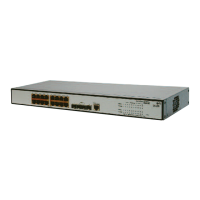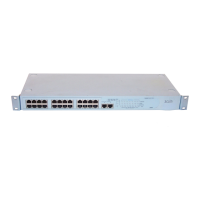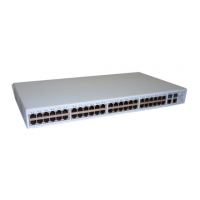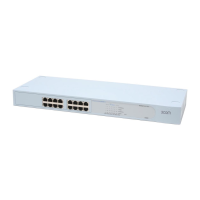1-18
Item Description
Bridge Diameter
Any two stations in a switched network are interconnected through a
specific path composed of a series of devices. The bridge diameter (or the
network diameter) is the number of devices on the path composed of the
most devices.
After you set the network diameter, you cannot set the timers. Instead, the
device automatically calculates the forward delay, hello time, and max age.
z The configured network diameter is effective for CIST only, not for
MSTIs.
z The bridge diameter cannot be configured together with the timers.
Forward
Delay
Set the delay for the root and designated
ports to transit to the forwarding state.
Hello
Time
Set the interval at which the device
sends hello packets to the surrounding
devices to ensure that the paths are
fault-free.
Timers
Max Age
Set the maximum length of time a
configuration BPDU can be held by the
device.
z The settings of hello time,
forward delay and max age
must meet a certain formula.
Otherwise, the network
topology will not be stable.
You are recommended to set
the network diameter and
then have the device
automatically calculate the
forward delay, hello time,
and max age.
z The bridge diameter cannot
be configured together with
the timers.
Instance
ID
Root Type
Instance
Bridge
Priority
Set the role of the device in the MSTI or the bridge priority of the device,
which is one of the factors deciding whether the device can be elected as
the root bridge.
Role of the device in the MSTI:
z Not Set: Not set (you can set the bridge priority of the device when
selecting this role)
z Primary: Configure the device as the root bridge (you cannot set the
bridge priority of the device when selecting this role)
z Secondary: Configure the device as a secondary root bridge (you cannot
set the bridge priority of the device when selecting this role).
tc-protection
Select whether to enable TC-BPDU guard.
When receiving topology change (TC) BPDUs, the device flushes its
forwarding address entries. If someone forges TC-BPDUs to attack the
device, the device will receive a large number of TC-BPDUs within a short
time and frequently flushes its forwarding address entries. This affects
network stability.
With the TC-BPDU guard function, you can prevent frequent flushing of
forwarding address entries.
You are recommended not to disable this function.
tc-protection
threshold
Set the maximum number of immediate forwarding address entry flushes
the device can perform within a certain period of time after receiving the first
TC-BPDU.
Return to
MSTP configuration task list.
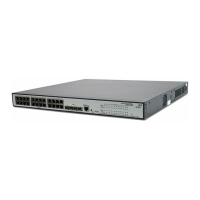
